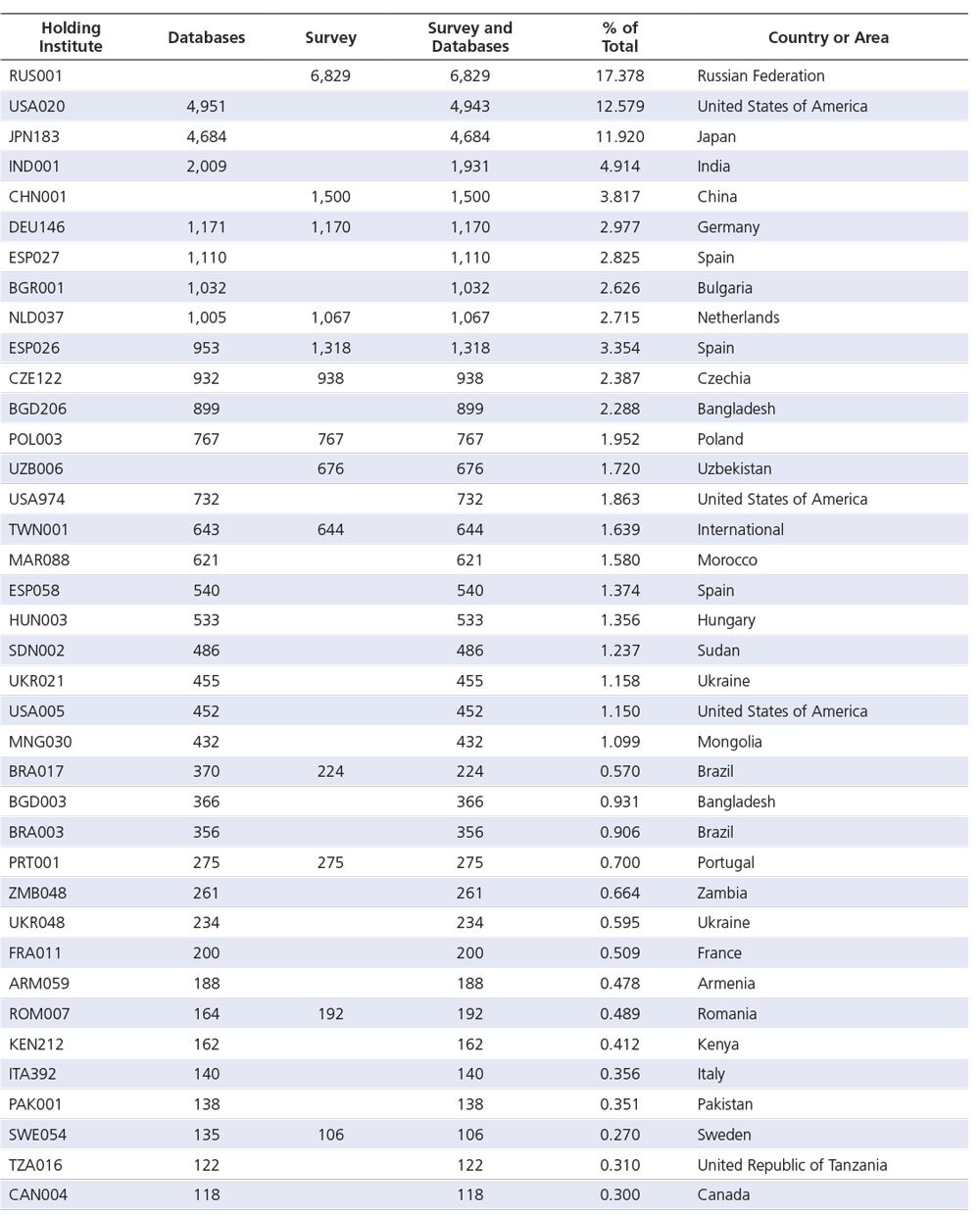A Global Conservation Strategy for Crops in the Cucurbitaceae Family
A global conservation strategy for crops in the Cucurbitaceae family was published in 2023 (Global Crop Diversity Trust 2023, DOI: 10.5281/zenodo.769652). This document, developed with the input of a large number of experts, aims to provide a framework for the efficient conservation and effective use of globally important collections of Cucurbitaceae genetic resources. This webpage provides a summary of some of the its key findings and of the recommendations for priority actions.
Ex situ collections: size and institutions
The tables below show the global number of accessions conserved ex situ for species in the genera Citrullus, Cucumis and Cucurbita .
Ex situ collections: taxa conserved
The tables below show the global number of accessions conserved ex situ for Citrullus, Cucumis and Cucurbita taxa.
Data availability
The chart below shows availability of accession-level passport, characterization and evaluation data in electronic format, as reported by genebanks in the Cucurbitaceae strategy survey.

Cucumis diversity tree
A diversity tree is a stratification of a genepool into groups and subgroups. The concept originated in a paper published by van Treuren et al. (2009) proposing a way to analyze and plan the composition of genebank collections. The diversity tree visualization is interactive (click on the tree to open it).
Recommendations for priority actions
- Collecting threatened and missing genetic diversity. Collecting from priority areas to fill gaps in existing collections: for wild relatives, in the Americas, Africa and Asia; for landraces, in primary regions of diversity (Mexico, Myanmar, Bangladesh and China).
- Global registry of ex situ Cucurbitaceae diversity: the Cucurbitaceae community should develop a global registry of collections conserved ex situ.
- Revision and harmonization of international, regional and national genebank databases: update the availability of cucurbit genetic resources and compare matching and non-matching accessions based on passport, morphological and molecular information.
- Safeguarding Cucurbitaceae collections and improving use:
- Regional collaboration to safeguard unique landraces and CWRs held by national genebanks but not yet duplicated in regional or international genebanks.
- Regeneration of threatened genebank accessions (e.g., due to low seed stocks, poor seed quality, or seed health problems).
- Commitment by regional genebanks to meeting policy and phytosanitary requirements for international exchange of Cucurbitaceae germplasm under the terms of the ITPGRFA and/or Nagoya Protocol.
- Development of seed health protocols for the safe distribution of Cucurbitaceae germplasm to avoid the introduction and dispersal of seedborne pathogens. Designation of regional third-party providers to undertake phytosanitary tasks in a cost-efficient and standardized way.
Partners and donor
The development of this crop conservation strategy was funded by the German Federal Ministry of Food and Agriculture (BMEL) as part of the three-year project led by the Crop Trust: Breathing New Life into the Global Crop Conservation Strategies: Providing an Evidence Base for the Global System of Ex Situ Conservation of Crop Diversity. The Crop Trust also cooperated with the Secretariat of The International Treaty on Plant Genetic Resources for Food and Agriculture (ITPGRFA) in the development of this document.












